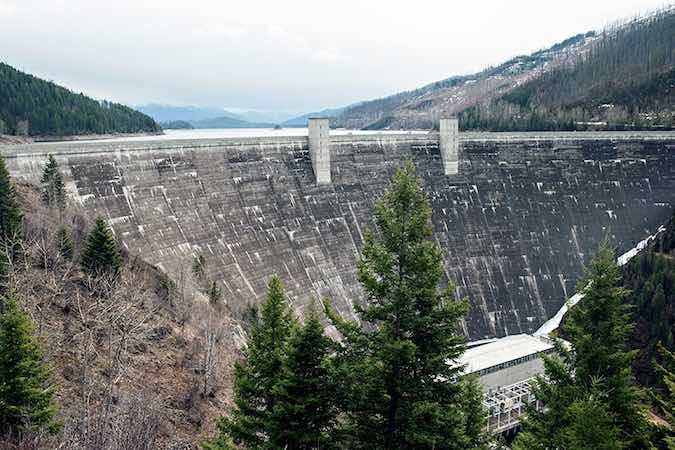forum
library
tutorial
contact

Meeting to Weigh in
on Columbia River System
by George Plaven
East Oregonian, November 13, 2016
|
the film forum library tutorial contact |

|
Meeting to Weigh in
by George Plaven
|
 Members of the public are invited to weigh in on how the federal government should operate each of 14 dams on the Columbia River System during a meeting Thursday in Walla Walla.
Members of the public are invited to weigh in on how the federal government should operate each of 14 dams on the Columbia River System during a meeting Thursday in Walla Walla.
The U.S. Army Corps of Engineers, Bonneville Power Administration and Bureau of Reclamation have five years to update an environmental impact statement, or EIS, for the river system, which broadly addresses how the dams should be run to protect everything from fish and wildlife to flood control.
Dams on the Columbia River System are spread out between Oregon, Washington, Idaho and Montana within the interior Columbia Basin. They include: Bonneville, The Dalles, John Day, McNary, Ice Harbor, Lower Monumental, Little Goose, Lower Granite, Dworshak, Albeni Falls, Grand Coulee, Chief Joseph, Libby and Hungry Horse.
BPA spokesman David Wilson said the agencies intended to update the existing EIS, which is 25 years old, even before U.S. District Court Judge Michael Simon essentially expedited the process as part of his ruling to protect endangered salmon runs.
Earlier this year, Simon rejected the feds' 2014 biological opinion intended to safeguard salmon. Among the issues, Simon found that agencies needed to update their EIS of the entire Columbia River System, which in turn would support the opinion on salmon.
Wilson said the EIS will consider a range of alternatives that analyze impacts on navigation, hydropower, irrigation and flood risk management, in addition to fisheries. But first, the agencies have kicked off a series of public scoping meetings to gather input from communities affected by the river system.
"The federal government is in listening mode," Wilson said. "What the EIS looks at exactly will be determined by the scoping process."
The closest meeting to Pendleton and Hermiston will be held Thursday at the Courtyard Walla Walla, 550 W. Rose St., from 4-7 p.m. The scoping process will run through Jan. 17, 2017, and a final EIS won't be done likely until 2021.
One of the signature issues raised is the potential breaching of four dams on the Lower Snake River. In his earlier ruling, Judge Simon stated that a proper analysis of protecting Snake River salmon runs "may well require" considering removing one or more of those dams.
"Dam breaching will likely be one of the actions analyzed in the EIS," Wilson said.
While the dams hamper fish migration, they also provide about 5 percent of the Northwest's hydroelectric power, according to a recent Associated Press report. BPA estimates that replacing the Lower Snake dams' production with natural gas would cost between $274 million and $372 million annually.
BPA is in charge of marketing and selling electricity generated off the Columbia River System. The Bureau of Reclamation operates and maintains two of the 14 dams -- Grand Coulee and Hungry Horse -- while the U.S. Army Corps operates the other 12.
Alternatives developed in the EIS will take a look at both system operations and structural modifications at the dams moving forward.
"We're taking comments so we can look at all options," Wilson said.
For more information on ways to comment, visit www.crso.info or call 1-800-290-5033.
learn more on topics covered in the film
see the video
read the script
learn the songs
discussion forum
